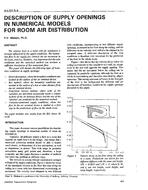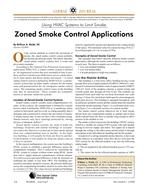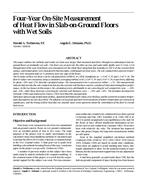ASHRAE Standard 55 defines draught as the unwanted cooling of the body due to air movement and specifies an allowable airflow of 40 ft/min for neutral temperatures to avoid draught discomfort. However, previous ASHRAE field studies and various laboratory studies showed that people want more airflow even when their thermal sensation is cool. This is counterintuitive considering the fact that a cooling stimulus is felt unpleasant when general thermal sensation is on the cool side. These two opposing facts imply that momentary thermal factors alone are not adequate to explain airflow perception but a transient approach is required that accounts for the previous short term (less than 1 hour) thermal experience. The current draught rating calculations in the thermal comfort standards account only for the steady state conditions which were tested and developed after long term exposure to the same thermal conditions to allow subjects reach a steady state thermal perception. However, everyday thermal environments are hardly steady state, and thermal exposure varies due to varying airflow patterns, solar radiation, or simply due to moving between spaces of different thermal conditions. This study focused on the draught perception under transient metabolic (1.2 Met to 4 Met) and transient airflow conditions (sinusoidal) and two steady-steady room temperature (75°F and 83°F) conditions. The results showed that subjects preferred more airflow when they felt cool even under neutral conditions (1.2 Met and 75°F). The study differentiated between the airflow background airflow required for comfort and explained the effect of short term thermal experience on the current airflow perception.
Citation: ASHRAE Papers CD: 2014 ASHRAE Annual Conference, Seattle, WA
Product Details
- Published:
- 2014
- File Size:
- 1 file , 1.7 MB
- Product Code(s):
- D-SE-14-C068


